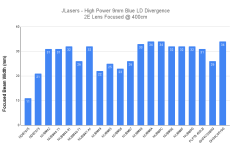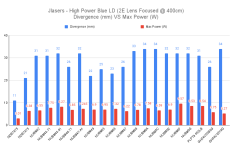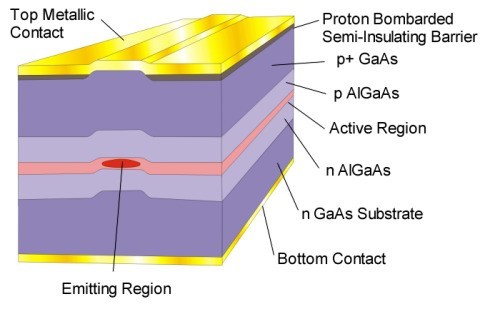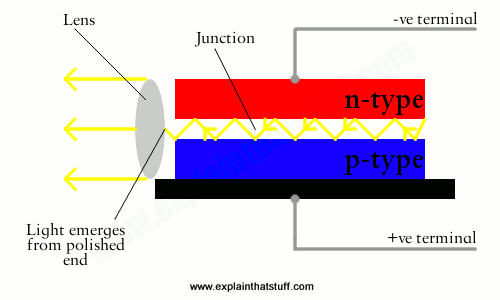I measured power with stock Gball, decanned and then tested with G2. they were identical to the mW.
Divergence without lens /= divergence with lens.
This is because measuring divergence with a lens projects the laser crystal, and focuses it.
Think of a diverging point source. Huge divergence without a lens, but a pin point with a lens.
in other words, Smaller die crystals will have better divergence with a lens, no matter their raw divergence without a lens.
if you look at the datasheet, the 7875 has WORST raw divergence than the NUBM44, but with a lens, this is a totally different story. Like I said, divergence with lens is based on crystal size and not raw divergence.
What use would it be testing power and divergence without a lens, most builds will use a copper module and lens
I used active cooling to maintain 21°c to keep tests consistent. The diode is at a constant temp throughout.
Letting my module get warm even by a degree would throw all my tests out of whack.
All divergence tests were done with the same exact 2E lens, at same exact distances from the wall (about 13ft), and then focused as tight as the beam would go, and then measured with my calipers. Not sure how you got worst divergence from the 42/49 !










